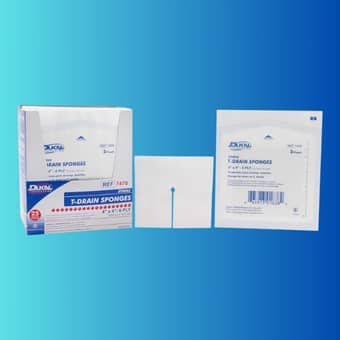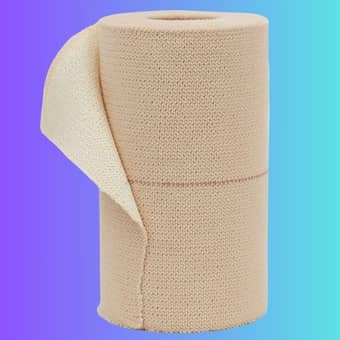HIIT stands for High-Intensity Interval Training. It’s popular for burning fat and aiding weight loss. You may wonder how well this training method works for you. Does it fit your fitness goals? This guide covers HIIT, its benefits, and tips to add it to your workouts for better results. Prepare to explore how this new method can change your fitness journey!

Table of Contents
Key Takeaways:
-
Boosted Metabolism: HIIT can raise your metabolism for hours after you work out. This means you burn more fat, even after exercising.
-
Time Efficiency: Short, intense HIIT sessions are great for busy people. They help burn a lot of calories in a short amount of time.
-
Improved Insulin Sensitivity: Regular HIIT workouts help your body use insulin better. This boosts fat burning and supports weight management.
I. Understanding HIIT

You can boost your fitness journey with High-Intensity Interval Training (HIIT). This training method mixes short, intense exercises with quick recovery breaks. This helps you get the most out of your workout. HIIT mixes aerobic and anaerobic activities. This approach raises your heart rate, boosts metabolism, and helps with fat loss. Plus, it saves you time in the gym.
1.1. Definition and Overview
While traditional steady-state cardio can be time-consuming, HIIT offers an effective alternative. This training method includes short, intense bursts of activity. Then, you take breaks. This approach helps your body burn calories even after you finish working out. Think of it as a fun and effective way to add cardio and strength training to your routine.
1.2. Types of HIIT Workouts

HIIT includes various styles that cater to different fitness levels and preferences. Here are a few popular types:
-
Sprint Intervals
-
Circuit Training
-
Tabata Protocol
-
Bodyweight HIIT
-
HIIT with Equipment
Assume that you explore these types to find what resonates with you the most. Each method has its own benefits. You can also adjust them to fit your workout routine.
| Type of HIIT Workout | Description |
|---|---|
| Sprint Intervals | Short, intense sprints followed by recovery periods |
| Circuit Training | Combination of strength exercises with minimal rest |
| Tabata Protocol | 20 seconds of high intensity followed by 10 seconds of rest, repeated for 4 minutes |
| Bodyweight HIIT | Uses your body weight as resistance during intervals |
| HIIT with Equipment | Incorporates devices such as kettlebells or battle ropes |
To get the most from HIIT workouts, tailor your training to your fitness level and goals. Change the intensity and work-to-rest ratios. This will help you build a routine that challenges you but also fits your abilities.
-
Start with shorter intervals as you build endurance.
-
Increase the intensity of your workouts as your fitness improves.
-
Incorporate varied exercises to keep your routine interesting.
-
Check your heart rate to ensure you’re working at the correct intensity.
-
Stay consistent to achieve optimal results.
Focus on these tips to improve your HIIT experience. They can help you burn fat and reach your weight loss goals faster.
| Strategies for HIIT Success | Benefits |
|---|---|
| Set SMART Goals | Helps track and motivate you |
| Cross-Train | Reduces risk of injury while promoting balance |
| Prioritize Recovery | Rest prevents fatigue and enhances performance |
| Stay Hydrated | Boosts energy and aids in recovery |
| Fuel Properly | Maximizes workout effectiveness |
II. Factors Influencing HIIT Effectiveness
Key factors can affect how well HIIT works for fat burning and weight loss, such as:
-
Individual fitness levels
-
Nutrition and dietary habits
-
Frequency and duration of workouts
-
Recovery and rest periods
-
Consistency in training
After evaluating these factors, you can tailor your HIIT program for optimal results.
2.1. Individual Fitness Levels
One of the most important aspects to consider is your individual fitness level. Beginners should start with shorter intervals and increase their intensity over time. Advanced individuals can push themselves harder. Knowing where you stand helps you improve your HIIT sessions to fit your skills.
2.2. Nutrition and Dietary Habits

Fitness is important for making HIIT effective in reaching your weight loss goals. Proper nutrition provides the fuel your body needs to perform during high-intensity workouts.
Nutrition impacts your energy during HIIT sessions and your fat loss. A balanced diet that focuses on whole foods gives you the energy you need for workouts. It also helps with recovery and muscle repair. Eating enough protein, healthy fats, and complex carbs can improve your HIIT results. This approach can also support weight loss.
III. Tips for Maximizing Fat Burning
High-intensity interval training (HIIT) can enhance your fat-burning potential more than traditional cardio. To get the most out of your workouts, follow these tips:
-
Incorporate strength training with HIIT.
-
Ensure you have proper nutrition pre- and post-workout.
-
Stay consistent with your training schedule.
-
Vary your HIIT exercises to keep things interesting.
-
Track your progress to stay motivated.
If you follow these tips, you should see better results in your fat loss journey.
3.1. Duration and Intensity

Burning fat in HIIT sessions relies on how long and how hard you work out. Try short, intense activities for 20–30 seconds. Then, take a break. This method not only keeps your heart rate elevated but also helps maximize calorie burn. As your intervals get tougher, your body learns to use stored fat better for energy.
3.2. Recovery and Rest Intervals
Pushing hard in HIIT makes recovery and rest intervals very important. Taking time to recover helps your body refill energy and avoid tiredness. This way, you can keep performing well in every session.
Rest and recovery improve your performance and help prevent injuries. Take rest periods that help you recover well. They should be as long as or longer than your work intervals. This balance helps you burn fat and boosts your workouts. You can push harder in the next intervals.
IV. Step-by-Step HIIT Guide

Many people find HIIT to be an effective method for burning fat and losing weight. This guide shows the key parts of a HIIT workout. It helps you get the most from your efforts.
HIIT Components
| Component | Description |
|---|---|
| Warm-Up | Prepare your body with dynamic stretches. |
| Intervals | Engage in high-intensity exercises followed by rest. |
| Cool Down | Gradually lower your heart rate and stretch. |
4.1. Designing a HIIT routine
To make a great HIIT routine, do this: pick your favorite exercises. Then, choose how long each interval will last. Finally, set your rest times for the best results.
4.2. Common Exercises for HIIT

Designing a HIIT workout means including various exercises that elevate your heart rate. You can pick movements like burpees, jumping jacks, mountain climbers, and high knees. These exercises are great for increasing intensity.
You can mix and match exercises based on your fitness level and preferences. Incorporate bodyweight movements as well as equipment-based exercises to keep your routines engaging. Change your workout to target different muscle groups. Rotate these common HIIT exercises. This way, you can keep challenging yourself for better results.
V. Pros and Cons of HIIT
To test the effectiveness of HIIT, consider its various advantages and disadvantages. The table below outlines key points to help you make an informed decision.
| Pros | Cons |
| Burns calories quickly | Can be physically demanding |
| Time-efficient workouts | Risk of injury without proper form |
| Boosts metabolic rate | May not be suitable for beginners |
| Improves endurance | Requires recovery time |
| Diverse workout options | Can lead to burnout |
| Fosters a sense of community | Equipment may be needed |
5.1. Advantages for Fat Loss

HIIT can help you lose fat. Its high intensity boosts your heart rate. This leads to burning more calories. The afterburn effect, or excess post-exercise oxygen consumption (EPOC), helps burn fat. This fat-burning continues for hours after your workout. HIIT can fit your fitness level. This makes it a tough but doable way to reach your weight loss goals.
5.2. Potential Drawbacks
Potential drawbacks of HIIT are the risk of injury. This is especially true if you’re new to high-intensity workouts or don’t have the right technique. Not balancing workouts with enough recovery time can cause burnout or overtraining.
Doing HIIT routines can be tough. If they start to feel the same or too hard, you might lose motivation. Also, if you’re new to fitness, the intensity might feel discouraging. This can slow your progress. Listen to your body. Take rest days or do lighter workouts. This helps keep your fitness journey sustainable.
Maximize Fat Loss with HIIT for Fat Burning Workouts

You can see that HIIT is an effective method for fat burning and weight loss. Adding short, intense exercise bursts with recovery time can help you. This speeds up your metabolism, helps burn fat, and raises calorie burn after exercise. This quick workout fits different fitness levels. You can incorporate it into your routine with little effort. To reach your weight loss goals, add HIIT sessions to your workout plan. Also, keep a balanced diet and get enough rest for the best results.
FAQ
Q: How does HIIT promote fat burning compared to steady-state cardio?
HIIT, or High-Intensity Interval Training, burns fat better than steady cardio. It boosts your metabolic rate during and after workouts. The intense bursts of activity elevate heart rate and enhance oxygen consumption. After HIIT sessions, the body keeps burning calories. We call this excess post-exercise oxygen consumption (EPOC). This can result in more fat loss over time than the steady calorie burn from traditional cardio.
Q: How often should I include HIIT in my workout routine for optimal weight loss?
For the best weight loss, do HIIT sessions 2-3 times a week. Mixing strength training and light cardio each week helps prevent overtraining. Listen to your body. Make sure to rest enough between HIIT sessions. This helps burn fat and keeps your performance strong.
Q: Can trainers tailor HIIT for individuals of different fitness levels?
Yes, you can tailor HIIT to suit various fitness levels. Beginners should begin with short bursts of intense effort and longer recovery times. In contrast, experienced exercisers can handle longer intervals and shorter rest periods. The key is to push yourself during the tough parts. Adjust the intensity and length based on what you can handle.
Q: How long should a typical HIIT session be for effective weight loss?
A typical HIIT session can range from 15 to 30 minutes and still be effective for weight loss. Sessions can be shorter than traditional workouts because of the increased intensity. Always do a warm-up before HIIT. Afterward, cool down to help your body recover. Short bursts of intense work can boost your calorie burn. Achieve this task with consistent effort for optimal results.
Q: Does nutrition play a role in the effectiveness of HIIT for fat loss?
Nutrition plays a crucial role in determining the effectiveness of HIIT for fat loss. A balanced diet helps recovery and energy during intense workouts. It should include enough protein, healthy fats, and carbohydrates. Drinking enough water and timing meals well can boost your performance in HIIT. This makes it easier to reach weight loss goals.
Last Updated on August 7, 2025 by Holistic Healths





